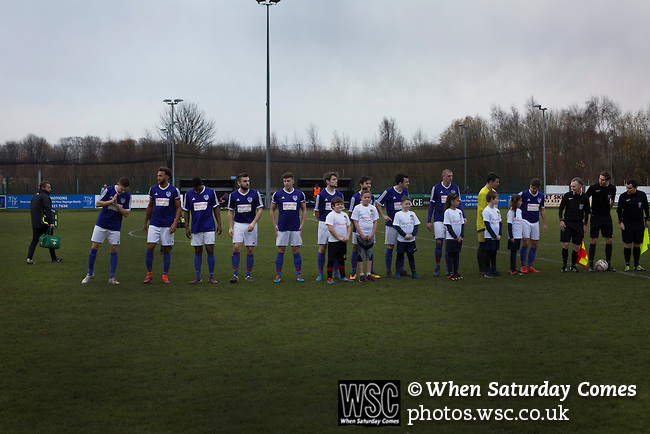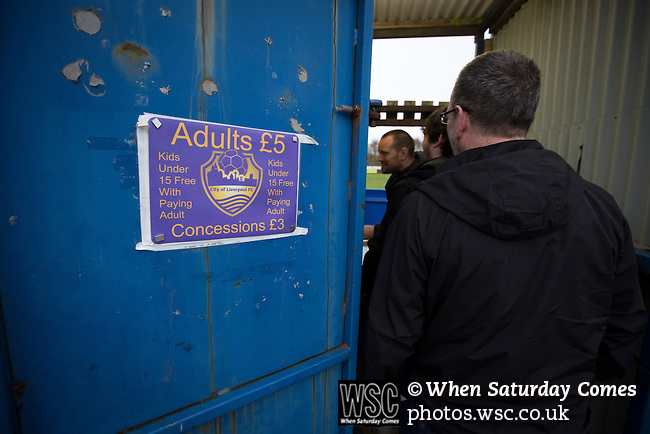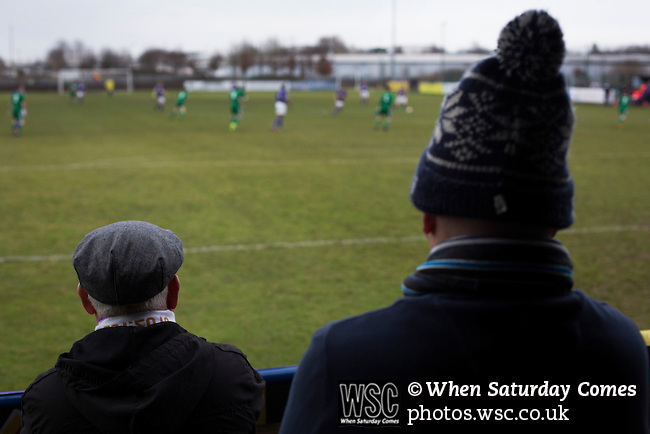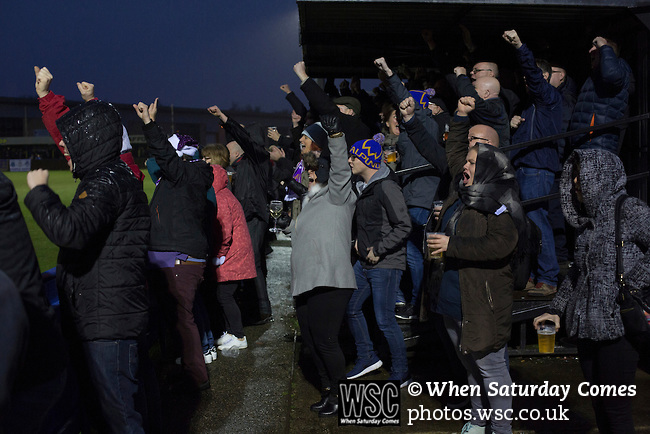
City of Liverpool FC want to fill a void by providing a football club for the whole of the city, unaligned to the red or blue halves of Merseyside
19 January ~ On a frigid November afternoon at Bootle’s windswept Delta Taxis Stadium, City of Liverpool FC, one of the country’s newest semi-professional clubs, are due to host Hanley Town in the Macron Cup. Part of the goalmouth is frozen, so players and officials are ferrying kettles of boiling water from the clubhouse in a desperate attempt to thaw the pitch. The secretary gives an exasperated sigh and continues repairing a lock on a storage cabinet. Very few people get involved with non-League football for the glamour. But an increasing number on Merseyside are falling for its other qualities.
The genesis of City of Liverpool FC can be traced back to 2009 when Liverpool FC were under the worrisome stewardship of Tom Hicks and George Gillett. At the time, a new non-League club, AFC Liverpool, were created as an alternative to Anfield, marketing themselves as Liverpool FC’s “baby brother” rather than a protest movement.
Paul Manning, who was briefly involved with the AFC project, later realised that Liverpool lacked a football club for the whole of the city, one that was independent, community-focused and unaligned to the red or blue halves of Merseyside. So in 2015, Manning, along with a likeminded committee, launched the supporter-owned City of Liverpool Football Club (COLFC) with the ambitious and unprecedented aim of playing within the city boundaries.

The club applied to the North West Counties Football League Division One (step six of the non-League system) for the start of the 2016-17 season but were initially placed one level below in the Liverpool County Premier League. An appeal was lodged, citing Liverpool’s unusual football landscape.
Manning argued that despite a population of around 450,000, there was no senior non-League team playing in the city (as oppose the wider metropolitan boroughs), a problem unique to Liverpool as one of the UK’s eight core regional cities. Market research was presented to the FA, demonstrating a need and opportunity for a stadium within the city limits. Entering the pyramid at the highest level possible would help facilitate this goal. Evidently swayed by what they saw, the appeal was upheld.
In hindsight, the decision has been vindicated. At the time of writing, COLFC are second in their division and averaging vocal gates of 440, a figure that would not look out of place several levels higher. Moreover, they have quickly become the best-supported semi-professional team in Merseyside. Inevitably, criticism has been drawn. Some have asked why interest isn’t being channelled towards existing clubs, claiming more competition will simply dilute the supporter pool.

However, as Manning points out, the clubs in question represent specific districts with localised appeal. “We felt that someone from Toxteth may not feel inclined to travel to Crosby to support Marine, but may travel somewhere centrally to support a citywide club,” he told the website This Is Anfield in 2015.
Quite why COLFC have proved so popular in such a short space of time is a little more complex. From a marketing perspective, the club ensure healthy visibility through slick social media, online shop and official podcast. Everything is designed in purple, the civic colour of Liverpool, to encourage a sense of local identity and reflect a merging of red and blue in an embracing statement of neutrality.
As for the burgeoning supporter base, there are assorted reasons for attending. “I appreciate being treated like an adult. You are trusted to drink in the stands without being demonised and allowed to move freely without constant monitoring from stewards,” one regular told me.

Others are drawn to the accessibility and affordability of COLFC and the absence of Byzantine ticketing arrangements. And there are those who simply like the idea of watching a second team that represents the city and its egalitarian culture. Clearly, lower-level non-League football won’t appeal to everyone, not least those who find the idea of split allegiance anathema. But as long as the wider game continues its obsession with money, some will either choose or be forced to seek alternative options on a Saturday afternoon.
In the long term, COLFC’s biggest challenge is finding a home that fulfils their raison d’être. At five miles from the city centre, Bootle’s ground is not a long-term viable option. Having been knocked back from the Wavertree Athletics Centre and a potential community stadium at King’s Dock, options are limited. “If we can’t find a home of our own in Liverpool, I concede we would have failed in delivering the very keystone of our existence,” Manning says. “But I am confident we will do so, and soon.” Bill Bryson wrote that Liverpool is dependent on its football clubs for a sense of destiny. This new football club appears dependent on Liverpool for theirs. Mike Bayly
This article first appeared in WSC 360, out now
All photos by Colin McPherson/WSC Photography: Scenes from City of Liverpool FC’s 6-1 win over Holker Old Boys on December 12, 2016. You can see the full gallery here